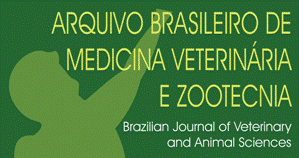Understand the operation dynamic among slaughterhouses helps to set up priorities and establish sanitary barriers in event of a possible animal health emergency or the search for strategies of diseases eradication in cattle. The objective of this study was to analyze and describe the acting areas of major cities that have slaughterhouses with federal inspection in the states of Mato Grosso and Mato Grosso do Sul, revealing the peculiarities of animal movement. The data for implementation of the study was provided by the Ministério da Agricultura, Pecuária e Abastecimento, and data was worked up spatially and through social networks. GIS techniques have revealed the regions of operation of the slaughterhouses of the major cities of the states, but in Mato Grosso targeting is easier to notice than in Mato Grosso do Sul. The results suggest a greater regionalization of the slaughter poles of Mato Grosso, with regions where the operation of the slaughterhouses is well defined, and there is less communication between the slaughter poles. In Mato Grosso do Sul there is a very strong flow directed to the central region of the state, encouraging greater interaction between the municipalities.
GIS; movement of cattle; social network; epidemiologic surveillance






